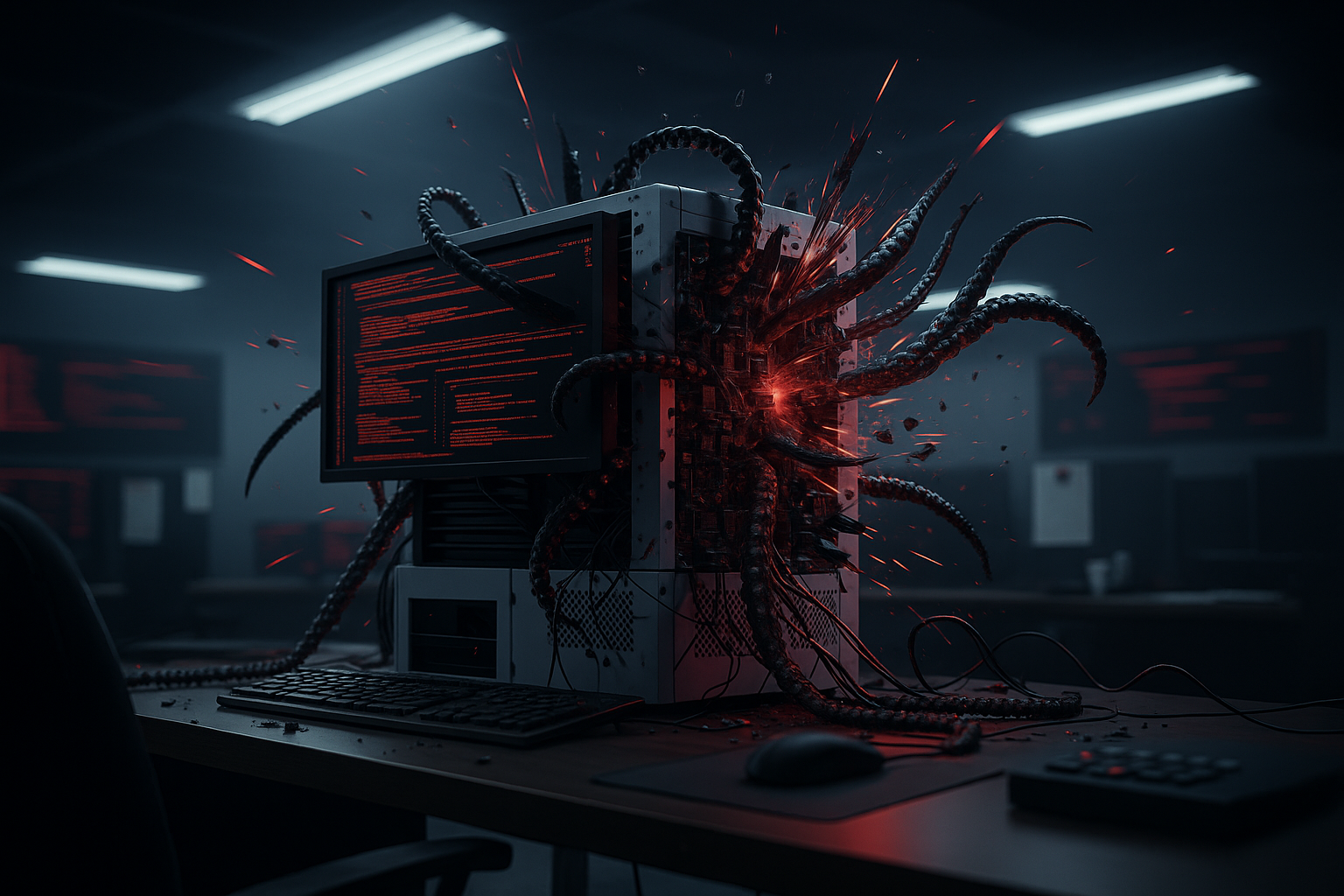DATE
November 4, 2025
Artificial intelligence has completely changed how cyber threats are created, delivered, and defended against. Tasks that once required weeks of scripting now happen in hours through automation. Attackers are no longer just coding; they are training models that adapt, regenerate, and learn from every failed attempt.
At ikPin, our research and advisory team has been studying this shift closely. The results are clear: AI has made cyberattacks easier, faster, and far more deceptive. From malware that rewrites itself to deepfakes that mimic real executives, organizations are facing threats that evolve faster than most defenses can keep up.
Artificial intelligence has transformed cybersecurity from a battle of tools into a contest of adaptation. Attackers now use AI to write malware that mutates on its own, craft phishing messages that sound perfectly natural, and generate deepfakes that make deception feel real.
This is not theoretical anymore. Our analysts are seeing a clear change in how these attacks operate and spread. AI has given attackers something defenders once relied on exclusively—speed, precision, and scalability.
Malware used to have a fingerprint. You could find it, block it, and move on. That is no longer the case.
Polymorphic malware, which rewrites its own code every time it runs, has become one of the fastest-growing threats since late 2024. Each version looks different, making traditional antivirus tools nearly useless. When one variation is stopped, another quickly appears in its place.
This has turned malware detection into an algorithmic chess match. It is no longer just about signatures; it is about behavior. Organizations that still depend on static detection tools are already behind. Continuous monitoring powered by AI-driven analytics now makes the difference, spotting the subtle behavioral shifts that older tools miss.
Deepfake attacks have moved from novelty to reality. Threat actors are cloning executive voices, staging fake video calls, and impersonating trusted contacts with unsettling accuracy.
Imagine seeing your CFO on a video call authorizing a transfer. The voice, the tone, even the small facial gestures all look right. That trust is what criminals exploit.
In several incidents analyzed by ikPin’s team, employees approved transactions after participating in convincing but entirely fabricated video meetings. By the time the fraud was uncovered, the funds were long gone.
Technology alone cannot stop this kind of deception. Strong policies, layered verification, and a culture of skepticism are essential. Any high-risk request should require a secondary confirmation through a separate communication channel. A simple verification step can stop a seven-figure loss.
Even with AI reshaping how attacks happen, people remain the first and last line of defense. Most breaches still start the same way: a user clicks a link, opens a file, or shares information they shouldn’t.
The difference now is that phishing messages no longer look suspicious. Generative models create emails that sound exactly like internal communication. They reference real projects, use the right tone, and even include personal details scraped from public sources.
Organizations that invest in ongoing awareness training and realistic phishing simulations see far fewer successful attacks. The more often employees practice identifying subtle deception, the less likely they are to fall for it in the real world. Awareness is still the most adaptive defense we have.
Modern cybersecurity requires more than detection tools and response plans. It demands systems that can think, verify, and learn at scale.
AI-based monitoring can identify anomalies that humans would overlook.
Zero-trust frameworks make sure every device and request is continuously verified.
Regular incident response drills give teams the confidence to act decisively under pressure.
When these layers work together, they create an ecosystem that adapts as fast as the threats it faces.

ikPin’s cybersecurity research and advisory team continues to study how generative AI is transforming both offense and defense. Across industries, we are seeing the same truth repeat itself: the organizations that combine automation with human judgment recover faster and stay safer longer.
Strong behavioral analytics, consistent user education, and clear verification policies are now the foundation of any serious security program. They are not optional. They are the difference between surviving a breach and being defined by one.
AI is rewriting the threat landscape. The real question is whether your defenses can learn as fast as your adversaries.